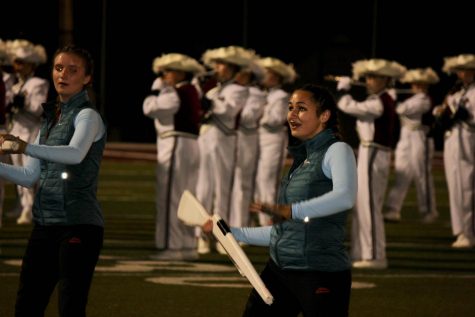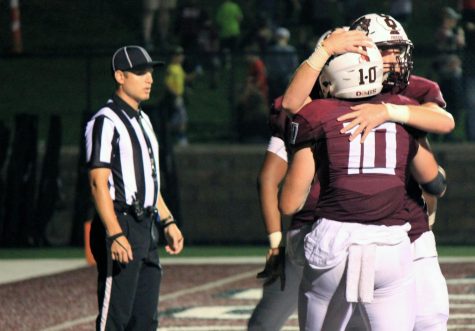Weighed down by backpacks
It is no surprise that Rolla High School students’ backpacks are heavy. One backpack at RHS typically has at least one large textbook or more. Can all of this weight on students backs be healthy? According to some local chiropractors, this may be something of concern, while also having some evidence of it being good.
Dr. Alan Singer, Doctor of Chiropractic, showed us some new research related to heavy weight on people’s backs and how it affects discs.
“We used to think that anytime you put a backpack on you were hurting yourself. Then there is a man, McGill, and he put together laboratories where he sticks needles in somebody’s discs and he watches how much pressure the disc can withstand before it ruptures,” Singer said.
According to Singer, this new research has found something surprising.
“So we used to think that when people put backpacks on that it did this [curved the back] that rounded it [which is] no good. They found that if you put the backpacks [ on the small of the back] and the more weight the better- it brought you so far back as to take the pressure off the disc,” Singer said.
This surprising new evidence had an unexpected conclusion, according to Singer.
“So all of the sudden, what used to be thought of as the worst thing you could possibly do, can actually be a very therapeutic thing,” Singer said.
Dr. Cameron Myers, Doctor of Chiropractic, and Rolla High School graduate feels strongly about how people wear backpacks.
“If one chooses to wear a heavy backpack on a daily basis, it is very important to ensure proper weight distribution and to stick with a pack that has two straps that are pulled tightly enough to keep the bottom of the bag above the beltline,” Myers said.
According to Myers, a two strap backpack is the best. Messenger style bags can be dangerous.
“This [proper weight distribution] is impossible to accomplish with the messenger style bags. Having all of the weight pulling on one side of the neck and shoulder can cause muscle imbalances and may eventually lead to pain or discomfort,” Myers said.
According to Myers, because students are still growing, it is very important that they are careful about how they distribute weight on their backs and shoulders from heavy bags. If students are not careful, there can be some negative effects on their spines if backpacks are not worn correctly.
“In some cases, the muscle imbalances and postural changes will lead to the development of scoliosis, a change in the normal curvature of the spine,” Myers said.
Many information sites, such as The AAOS, or the American Academy of Orthopaedic Surgeons, say that students backpacks should be between 10 to 15 percent of their body weight.
The Echo staff took the challenge of finding the percent of their backpacks to their body weight. The results were, for the most part, within the appropriate weight, as described by The AAOS.








